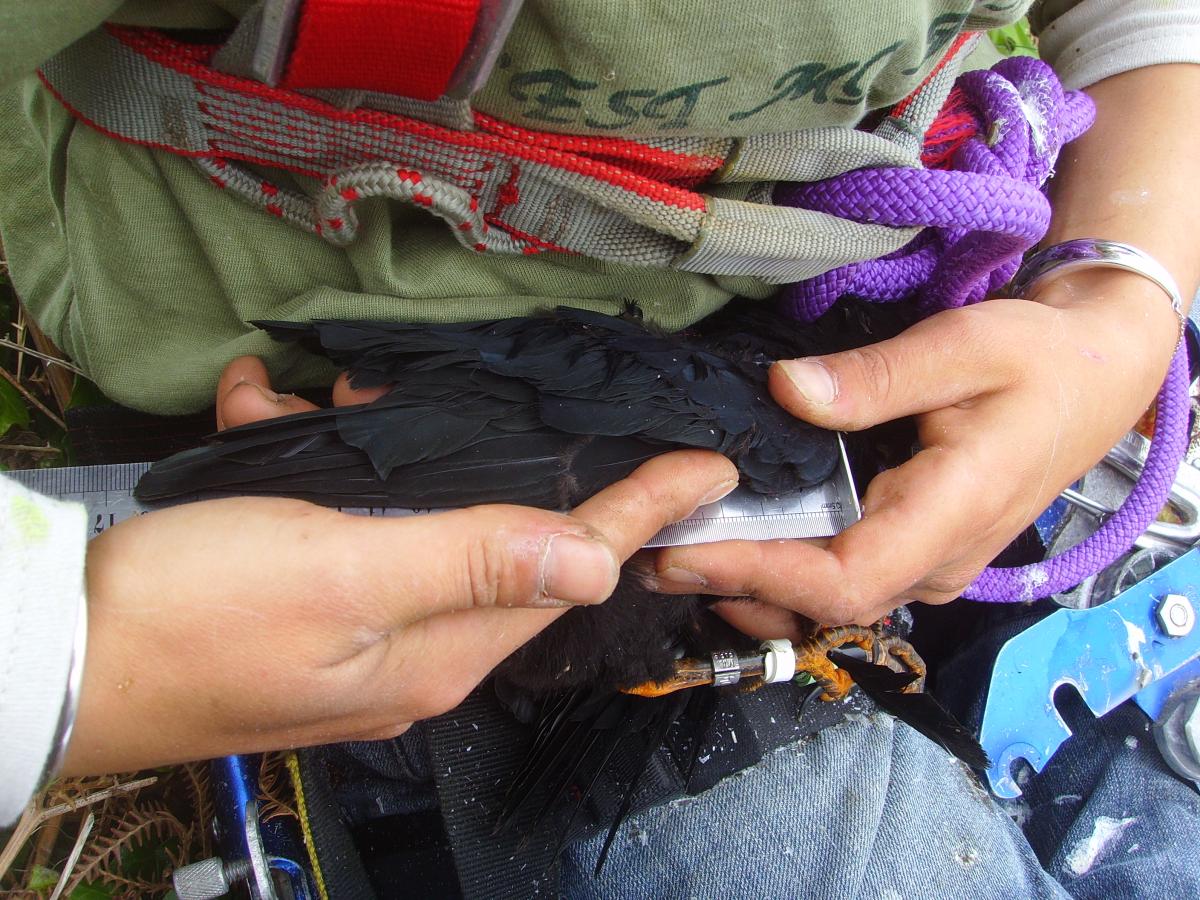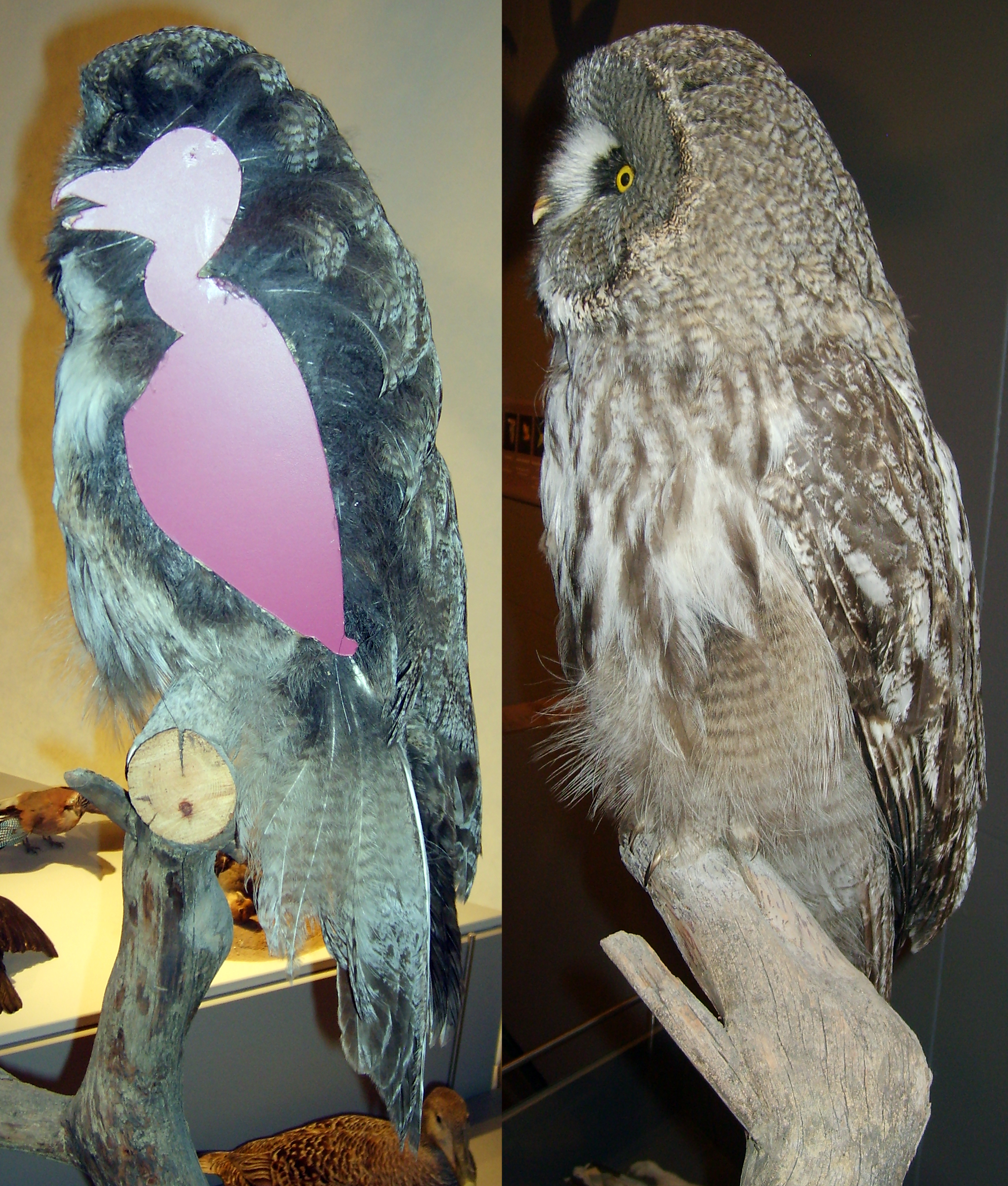|
Blakiston's Fish Owl
Blakiston's fish owl (''Bubo blakistoni''), the largest living species of owl, is a fish owl, a sub-group of eagle-owls which specialize in hunting in riparian areas. It is native to China, Japan, and the Russian Far East. This species is a part of the family known as typical owls (Strigidae), which contains most species of owl. Blakiston's fish owl and three related species were previously placed in the genus ''Ketupa''; however, mtDNA cytochrome ''b'' sequence data is equivocal on which of the two genus names (''Ketupa'' or ''Bubo'') is more appropriately applied for this species. Its habitat is riparian forest with large, old trees for nest sites that is near lakes, rivers, springs, and shoals that do not freeze in winter. Henry Seebohm named this bird after the English naturalist Thomas Blakiston, who collected the original specimen in Hakodate on Hokkaidō, Japan in 1883. Taxonomy It is more correct to call this species the Blakiston's eagle-owl. This is because it is more ... [...More Info...] [...Related Items...] OR: [Wikipedia] [Google] [Baidu] |
Henry Seebohm
Henry Seebohm (12 July 1832 – 26 November 1895) was an English steel manufacturer, and amateur ornithologist, oologist and traveller. Biography Henry was the oldest son of Benjamin Seebohm (1798–1871) who was a wool merchant at Horton Grange, Bradford. The family had moved to England from Bad Pyrmont in Germany. Henry's mother Estther Wheeler (1798–1864) was a granddaughter of William Tuke. The Seebohms were active in the Society of Friends and Henry schooled within the community in York. He worked initially in a grocery as an assistant but moved to Sheffield where he became a steel manufacturer. He married Maria, daughter of George John Healey, a merchant in Manchester on 19 January 1859. Natural history Henry became interested in natural history at school and continued to spend his spare time studying birds on his journeys. He travelled widely visiting Greece, Scandinavia, Turkey, and South Africa. His expeditions to the Yenisey tundra of Siberia were described in ... [...More Info...] [...Related Items...] OR: [Wikipedia] [Google] [Baidu] |
Barred Eagle-owl
The barred eagle-owl (''Bubo sumatranus''), also called the Malay eagle-owl, is a species of eagle owl in the family Strigidae. It is a member of the large genus ''Bubo'' which is distributed on most of the world's continents. This relatively little-known species is found from the southern Malay Peninsula down a string of several of the larger southeast Asian islands to as far as Borneo. It forms a superspecies with the physically similar but larger spot-bellied eagle-owl (''Bubo nipalensis''), although the two species appear to be allopatric in distribution.''Owls of the World: A Photographic Guide'' by Mikkola, H. Firefly Books (2012), Distribution and habitat It is found in Brunei, Cocos (Keeling) Islands, Indonesia, Malaysia, Myanmar, Singapore, and Thailand. Its natural habitat is subtropical or tropical moist lowland forests. It typically is a resident of evergreen forests with pools or streams, but also ranges into large gardens with tall, densely foliated trees, such a ... [...More Info...] [...Related Items...] OR: [Wikipedia] [Google] [Baidu] |
Tawny Fish Owl
The tawny fish owl (''Ketupa flavipes'') is a fish owl species in the family known as typical owls, Strigidae. It is native from southern Nepal to Bangladesh, Vietnam and China. Due to its wide geographical distribution, it is listed as Least Concern on the IUCN Red List. Taxonomy ''Cultrunguis flavipes'' was the scientific name proposed by Brian Houghton Hodgson in 1836 who described a yellow-footed fish owl from Nepal. ''Ketupa'' was proposed as generic name by René-Primevère Lesson in 1831 for fish owl species from Java and India. Results of a phylogenetic analysis of nine horned owl species indicate that ''Ketupa'' species form a monophyletic group. Description Like other fish owls, the tawny fish owl has large ear tufts but they usually hang to the sides of the head and are distinctly messy and tousled looking. They have yellow eyes. Tawny fish owls have been described as the most "attractive" of the fish owls.Hume, R. (1991). ''Owls of the world''. Running Press, Phi ... [...More Info...] [...Related Items...] OR: [Wikipedia] [Google] [Baidu] |
Culmen (bird)
The beak, bill, or rostrum is an external anatomical structure found mostly in birds, but also in turtles, non-avian dinosaurs and a few mammals. A beak is used for eating, preening, manipulating objects, killing prey, fighting, probing for food, courtship, and feeding young. The terms ''beak'' and ''rostrum'' are also used to refer to a similar mouth part in some ornithischians, pterosaurs, cetaceans, dicynodonts, anuran tadpoles, monotremes (i.e. echidnas and platypuses, which have a beak-like structure), sirens, pufferfish, billfishes and cephalopods. Although beaks vary significantly in size, shape, color and texture, they share a similar underlying structure. Two bony projections – the upper and lower mandibles – are covered with a thin keratinized layer of epidermis known as the rhamphotheca. In most species, two holes called ''nares'' lead to the respiratory system. Etymology Although the word "beak" was, in the past, generally restricted to the sharpened bills o ... [...More Info...] [...Related Items...] OR: [Wikipedia] [Google] [Baidu] |
Tarsus (skeleton)
In the human body, the tarsus is a cluster of seven articulating bones in each foot situated between the lower end of the tibia and the fibula of the lower leg and the metatarsus. It is made up of the midfoot (Cuboid bone, cuboid, medial, intermediate, and lateral cuneiform bone, cuneiform, and navicular) and hindfoot (Talus bone, talus and calcaneus). The tarsus articulates with the bones of the metatarsus, which in turn articulate with the proximal phalanges of the toes. The joint between the tibia and fibula above and the tarsus below is referred to as the ankle, ankle joint proper. In humans the largest bone in the tarsus is the calcaneus, which is the weight-bearing bone within the heel of the foot. Human anatomy Bones The talus bone or ankle bone is connected superiorly to the two bones of the lower leg, the tibia and fibula, to form the ankle, ankle joint or talocrural joint; inferiorly, at the subtalar joint, to the calcaneus or heel bone. Together, the talus and ... [...More Info...] [...Related Items...] OR: [Wikipedia] [Google] [Baidu] |
Wing Chord (biology)
Wing chord is an anatomical measurement of a bird's wing. The measurement is taken with the wing bent at a 90-degree angle, from the most prominent point of the wrist joint to the most prominent point of the longest primary feather. It is often taken as a standard measurement of the proportions of a bird and used to differentiate between species and subspecies. See also * Bird measurement Bird measurement or bird biometrics are approaches to quantify the size of birds in scientific studies. The measurements of the lengths of specific parts and the weights of birds varies between species, populations within species, between the sex ... References {{Bird-stub Bird anatomy ... [...More Info...] [...Related Items...] OR: [Wikipedia] [Google] [Baidu] |
Great Horned Owl
The great horned owl (''Bubo virginianus''), also known as the tiger owl (originally derived from early naturalists' description as the "winged tiger" or "tiger of the air"), or the hoot owl, is a large owl native to the Americas. It is an extremely adaptable bird with a vast range and is the most widely distributed true owl in the Americas. Its primary diet is rabbits and hares, rats and mice, and voles, although it freely hunts any animal it can overtake, including rodents and other small mammals, larger mid-sized mammals, birds, reptiles, amphibians, and invertebrates. In ornithological study, the great horned owl is often compared to the Eurasian eagle-owl (''Bubo bubo''), a closely related species, which despite the latter's notably larger size, occupies the same ecological niche in Eurasia, and the red-tailed hawk (''Buteo jamaicensis''), with which it often shares similar habitat, prey, and nesting habits by day, thus is something of a diurnal ecological equivalent. The gr ... [...More Info...] [...Related Items...] OR: [Wikipedia] [Google] [Baidu] |
Siberia
Siberia ( ; rus, Сибирь, r=Sibir', p=sʲɪˈbʲirʲ, a=Ru-Сибирь.ogg) is an extensive geographical region, constituting all of North Asia, from the Ural Mountains in the west to the Pacific Ocean in the east. It has been a part of Russia since the latter half of the 16th century, after the Russians conquered lands east of the Ural Mountains. Siberia is vast and sparsely populated, covering an area of over , but home to merely one-fifth of Russia's population. Novosibirsk, Krasnoyarsk and Omsk are the largest cities in the region. Because Siberia is a geographic and historic region and not a political entity, there is no single precise definition of its territorial borders. Traditionally, Siberia extends eastwards from the Ural Mountains to the Pacific Ocean, and includes most of the drainage basin of the Arctic Ocean. The river Yenisey divides Siberia into two parts, Western and Eastern. Siberia stretches southwards from the Arctic Ocean to the hills of north-ce ... [...More Info...] [...Related Items...] OR: [Wikipedia] [Google] [Baidu] |
Great Gray Owl
The great grey owl (''Strix nebulosa'') (also great gray owl in American English) is a very large owl, documented as the world's largest species of owl by length. It is distributed across the Northern Hemisphere, and it is the only species in the genus '' Strix'' found in both Eastern and Western Hemispheres. In some areas it is also called Phantom of the North, cinereous owl, spectral owl, Lapland owl, spruce owl, bearded owl, and sooty owl. Description Adults have a large rounded head with a grey face and yellow eyes with darker circles around them. The underparts are light with dark streaks; the upper parts are grey with pale bars. This owl does not have ear tufts and has the largest facial disc of any raptor. There is a white collar or "bow tie" just below the beak. The long tail tapers to a rounded end. In terms of length, the great grey owl is believed to exceed the Eurasian eagle-owl and the Blakiston's fish owl as the world's largest owl. The great grey is outweighed by ... [...More Info...] [...Related Items...] OR: [Wikipedia] [Google] [Baidu] |
Genome
In the fields of molecular biology and genetics, a genome is all the genetic information of an organism. It consists of nucleotide sequences of DNA (or RNA in RNA viruses). The nuclear genome includes protein-coding genes and non-coding genes, other functional regions of the genome such as regulatory sequences (see non-coding DNA), and often a substantial fraction of 'junk' DNA with no evident function. Almost all eukaryotes have mitochondria and a small mitochondrial genome. Algae and plants also contain chloroplasts with a chloroplast genome. The study of the genome is called genomics. The genomes of many organisms have been sequenced and various regions have been annotated. The International Human Genome Project reported the sequence of the genome for ''Homo sapiens'' in 200The Human Genome Project although the initial "finished" sequence was missing 8% of the genome consisting mostly of repetitive sequences. With advancements in technology that could handle sequenci ... [...More Info...] [...Related Items...] OR: [Wikipedia] [Google] [Baidu] |
Convergent Evolution
Convergent evolution is the independent evolution of similar features in species of different periods or epochs in time. Convergent evolution creates analogous structures that have similar form or function but were not present in the last common ancestor of those groups. The cladistic term for the same phenomenon is homoplasy. The recurrent evolution of flight is a classic example, as flying insects, birds, pterosaurs, and bats have independently evolved the useful capacity of flight. Functionally similar features that have arisen through convergent evolution are ''analogous'', whereas '' homologous'' structures or traits have a common origin but can have dissimilar functions. Bird, bat, and pterosaur wings are analogous structures, but their forelimbs are homologous, sharing an ancestral state despite serving different functions. The opposite of convergence is divergent evolution, where related species evolve different traits. Convergent evolution is similar to parallel evo ... [...More Info...] [...Related Items...] OR: [Wikipedia] [Google] [Baidu] |


.jpg)



.jpg)


